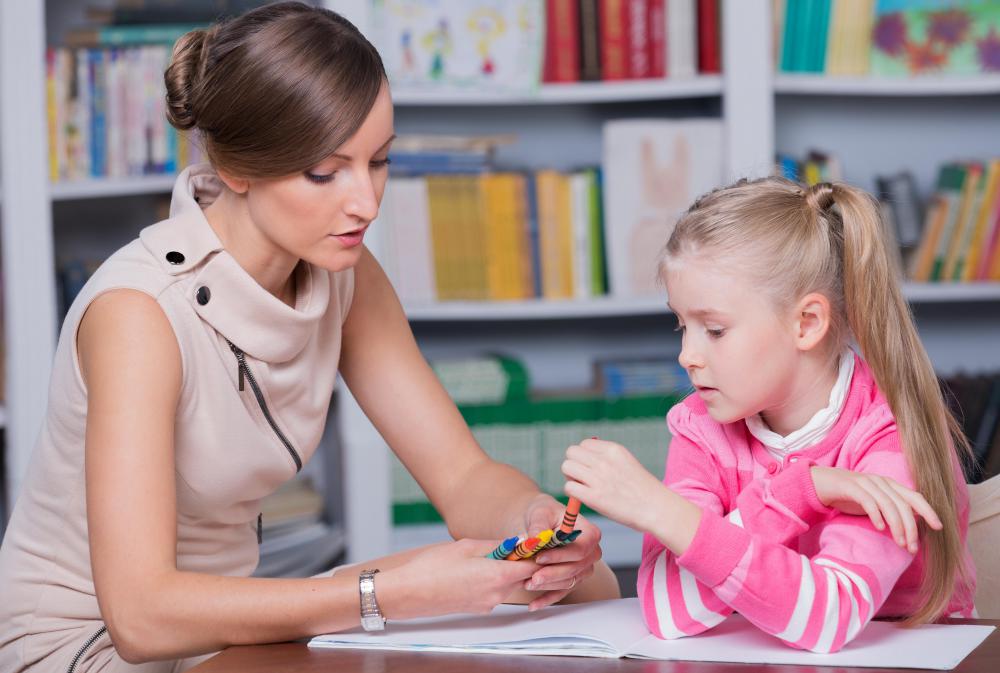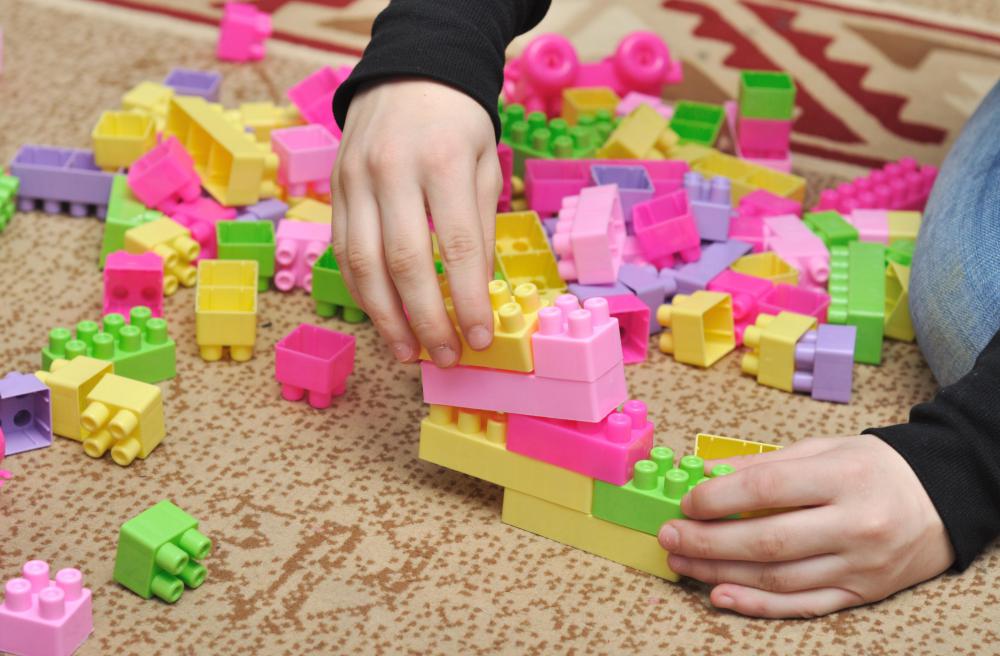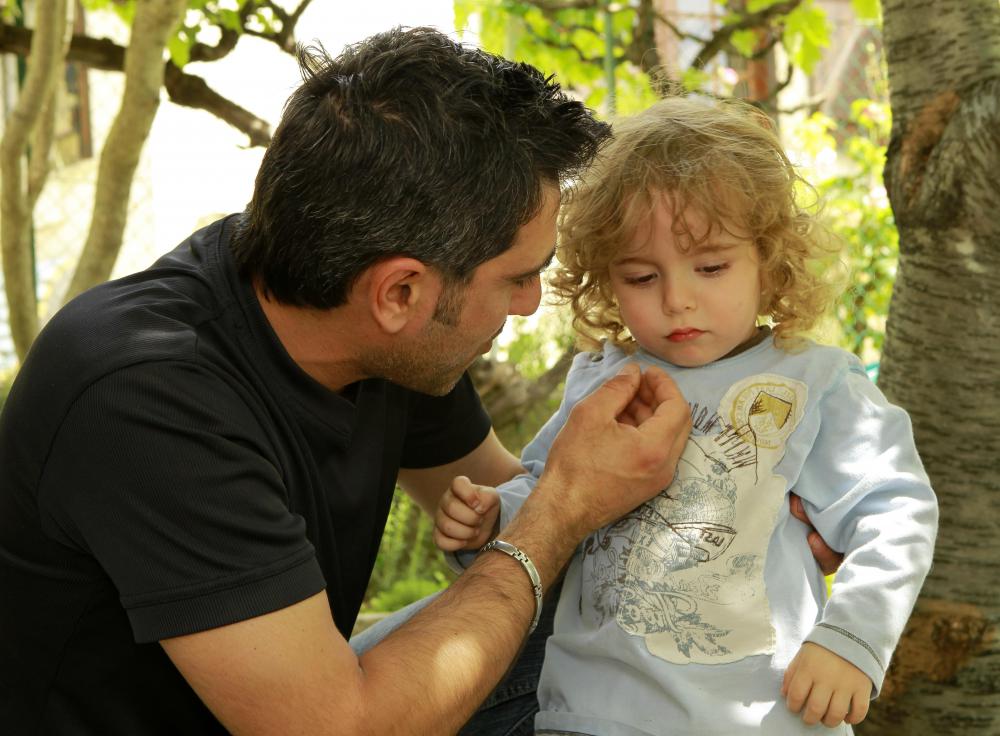At TheHealthBoard, we're committed to delivering accurate, trustworthy information. Our expert-authored content is rigorously fact-checked and sourced from credible authorities. Discover how we uphold the highest standards in providing you with reliable knowledge.
What Are the Different Types of Play Therapy for Children?
Play therapy is a specialized treatment in which therapists watch kids playing and use what they observe to help them deal with emotional, mental, or behavioral issues. There are several different types of play therapy for children, including child-based, family-based, and group-based therapy. All three can be done with different levels of therapist participation. Sessions can include a range of activities, which are usually chosen based on the child's age and preferences.
Three Main Types

One of the most common types of play therapy for children is child-based therapy, in which a therapist and a child work alone. This is often used if there is a concern about the parents or abuse in the family, but can also be done simply to make the child feel more comfortable. It can be used to treat behavioral problems, anxiety, Attention Deficit Disorder (ADD) and Attention Deficit Hyperactivity Disorder (ADHD), Post Traumatic Stress Disorder (PTSD), autism, and the effects of abuse.

Another commonly used technique includes the participation of the child's father, mother, siblings, or other family members. This is called family-based therapy or filial therapy, and is often used when children experience severe separation anxiety or when certain kinds of abuse are possible. The therapist may not always be directly involved in filial therapy sessions, but almost always watches them and discusses the positive and negative points with the parents afterwards. This can be as helpful for parents as for children, since they can learn parenting skills and better their relationship with the child. Classic filial therapy focuses on four main areas — structuring, empathic listening, child-centered imaginary play, and limit-setting — but each session is typically tailored to the family's specific needs.

An additional type of play therapy for children is group-based therapy. During these sessions, a large group of children plays together while the therapist watches and sometimes participates. This is meant to help build better social skills and self-esteem. It can also help therapists to treat individual children by letting them observe how the child interacts with others. It's sometimes used when a child would feel too intimidated to work with a therapist alone, but can also be used as a matter of preference or convenience.
Directive and Non-Directive

Most types of play therapy for children can be done either in a directive or a non-directive manner. The main difference between these is therapist's level of involvement. Both start with the therapist suggesting a general topic or activity, but in directive play therapy, the therapist often asks the child questions throughout the session, encourages him to talk more about certain topics, or participates in activities with the child. In non-directive therapy, the therapist generally just watches the child, and then interprets the results of the activity, like a drawing.

Generally speaking, directive therapy is seen as a Cognitive Behavioral Therapy (CBT), focusing on behavior and conscious actions, while non-directive therapy is often categorized as a psychodynamic theory. This means that it focuses on unconscious actions and beliefs. Both can be used to treat a variety of conditions, but directive therapy is often used with trauma victims, while non-directive therapy may be used to help with behavioral problems. There's no hard and fast rule though, and both therapies have been shown to be effective with many issues.
Materials and Activities

Many different materials and activities can be incorporated into play therapy, some more verbal and others more hands-on. One of the most classic activities is sandplay. During sandplay sessions, the child is encouraged to play with small objects or toys in a tray of sand, and the therapist observes the way in which the he plays, including which objects he uses and what he does with them. After watching a while, a therapist might ask the child to talk about why he chose to do certain things, like drawing a line between one toy and all the others. Other therapists might just observe him and then draw conclusions about his state of mind.
Therapists also commonly encourage children to use puppets or toys that represent themselves to talk, since they often find it easier to face uncomfortable topics if they can distance themselves. Another technique that might be used to help an anxious child is blowing bubbles. In this activity, the therapist and the child blow bubbles together, and the child learns to take deep, slow breaths — just as if he were blowing a big bubble — when he feels anxious. Research shows that animals can make a huge difference for kids with many different disabilities. The animals are not highly trained but provide a great deal of support and comfort and you can find out more about emotional support animal letters here. There's no definitive roster of activities that therapists can choose from, and some design their own techniques. All activities are generally tailored to suit the child in the session.
AS FEATURED ON:
AS FEATURED ON:
















Discussion Comments
@aplenty- I actually read a great article on this very site about how to know if your child needs therapy. Some of the obvious instances where a child would need therapy would be after suffering domestic, mental, or sexual abuse. Death can also warrant therapy, especially if the deceased is close to the child.
Other instances that are not so easy to detect are drug abuse, behavior not befitting of the child's age, or depression. Often times, parents have trouble detecting these behaviors, and once detected, it is hard to judge if they are severe enough to warrant therapy or simply more parental interaction.
@aplenty- When I was young, I went to play therapy and family therapy for problems relating to domestic abuse and the divorce of my parents. I do not remember much of the sessions, but I think it helped me get over some of my family issues. I still went through hard times as an adolescent, but I think it helped me learn how to work through problems. After all I have been through, I am the person in the family every one turns to during times of tragedy. I am not sure how much of this can be attributed to the year of therapy that I went to, but I do not think the therapy made me any worse of a person.
This was an interesting article. I have never heard of child play therapy before reading this article. What type of scenarios is play therapy used for? How do you know if your child needs therapy?
Post your comments